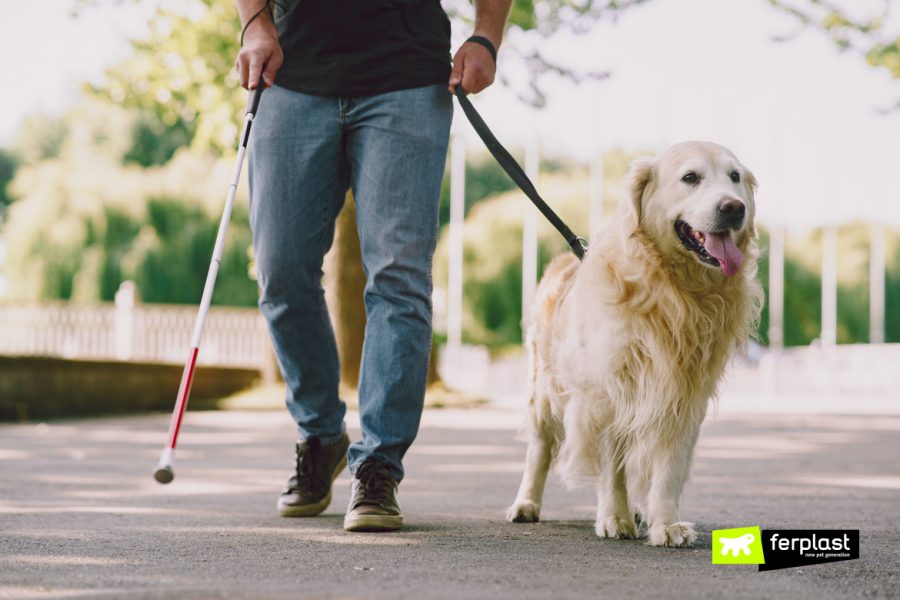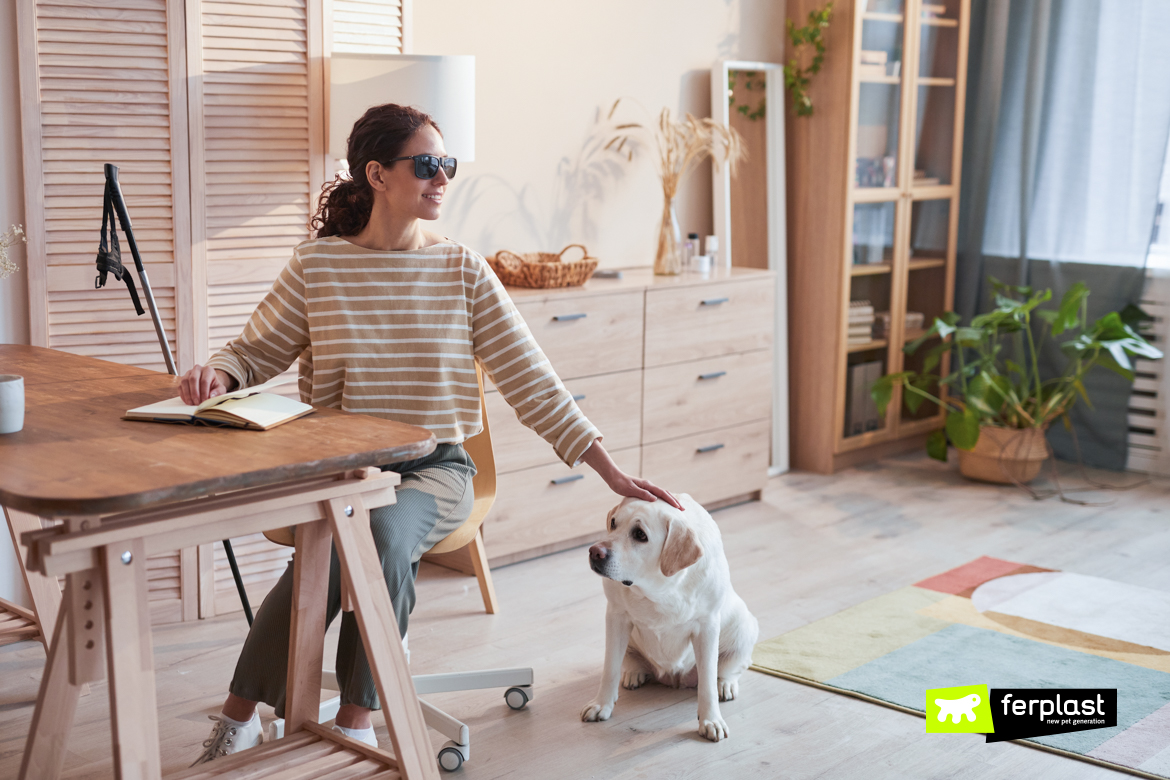Guide dogs make life easier for visually impaired people in everyday life. Their job is to increase safety and improve people’s quality of life.
The origins of guide dogs
It was only during the First World War that people started talking about guide dogs. There was in fact a need in Great Britain to train four dogs to assist visually impaired former soldiers. They were mainly female Sheperds or German Sheperds.
However, unlike the past, today’s guide dogs are mostly Labrador Retrievers. In fact, despite having a very similar character to the German Sheperd, they are more docile and gentler.
The characteristics of guide dogs
Guide dogs must provide its pet-parent with absolute autonomy and safety when on the move, also adapting to his or her pace. In such cases, the guide dog must even disobey commands to avoid real danger. Also, it is important that the pet is in excellent health and is not affected by any disease that require major care so that the visually impaired person can easily provide for the guide dog.
Finally, it is essential that the animal does not have a strong predatory or hunting instinct, as it could put the visually impaired owner in serious danger.
How to train guide dogs
From an early age, i.e. from 4 weeks, puppies are subjected to various tests that monitor their behaviour. The tests concern exposure to new sounds and environments, and responses to major commands. From 3 months of age, however, the stimuli increase. Their reaction to vehicles or suspended obstacles is monitored.
All these tests are really important to check the dog’s ability to respond to stimuli. In fact, the dog must be able to recognize changes of route and direction.
By the end of training, guide dogs usually know about 50 commands that enable them to:
– Obey orders from directions;
– Know and identify an obstacle and go around it;
– Find and cross a pedestrian crossing;
– Stop in front of a footpath;
– Help climbing up or down stairs;
– Finding certain useful elements such as a letterbox, bus stop, etc.
The benefits of guide dogs
Thanks to their training, guide dogs guarantee the owner:
– Maximum autonomy and safety when on the move. This allows the pet-parent not to depend on another person. The dog will autonomously go around possible obstacles when on the move.
– Ease of walking. With the help of the guide dog, the visually impaired person will be able to move and walk with ease.
– Contact: people come into contact with the visually impaired more when he or she has a dog.
– Companionship: a guide allows the person with a disability to feel less lonely.
This last aspect is by no means to be underestimated. The risk of people with visual impairments is in fact that of suffering from loneliness. In this respect, the guide dog plays a key and fundamental role.
This is how man’s best friend once again becomes a support and guide for those people who need help and assist them in their daily lives.




